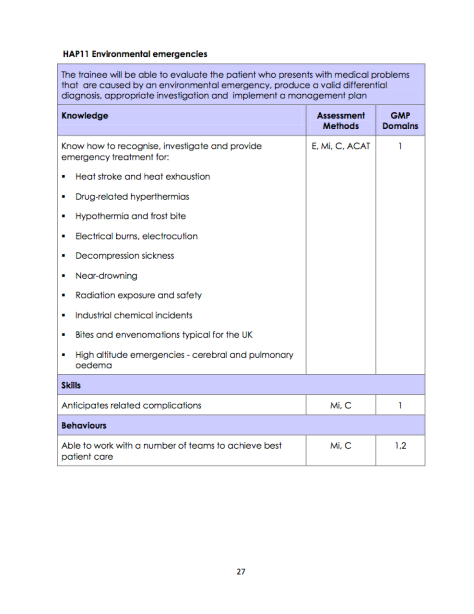“Heat” Hot Environmental Emergencies – Regional training Day
Notes by Tim Slade

https://openclipart.org/
Heat Emergencies
Heat energy moves from hot to cold.
In hot environments greater importance of heat exchange, which can occur by:
- Exchange
- Radiation
- Convection
- Conduction
- Evaporation
Most important way to regulate high temperature is sweating
- Enables heat loss from evaporation
- More effective in hot dry air
- Prevents further increase in heat but need to be hot first for sweating to occur
- Requires hydration and causes loss of salts
- Not as efficient in hot humid conditions such as warm weather in the UK
Acclimatization important to prevent issues. Takes 2-3 weeks for this to occur and requires regular short exercise to achieve. This decreases your resting HR, decreases skin and core temperature, decreases salt loss, triggers sweating at lower temperature, and increases your ability to exercise.
Most therapeutic drugs are a risk factor for issues with heat related illness.
Heat Cramps:
Due to heat loss in sweat. Rxn Salt replacement.
Heat Syncope:
Caused by postural venous pooling due to vasodilatation in the heat. Rxn fluid and salt replacement.
Heat Rash:
Miliaria Rubera. Caused by blocked sweat glands which have decreased function. Rxn Washing and antihistamines.
Check out Dermnetnz website for further information and pictures
Heat Exhaustion
- Caused by Volume depletion
- CNS unimpaired
- Sx: Lethargy, headache, nausea, vomiting, dizziness.
- Rxn: IV/Oral fluids, Cool down.
Heat Stroke
T 39-41oC with CNS dysfunction.
- If temp >41oC results in :
- Uncoupling of oxidative phosphorylation
- Denaturing of enzymes
- Disturbance of lipid membrane
- Alteration of chemical bonds
- Cerebral damage
- Failure of compensatory mechanisms
- Multi-organ failure
Therefore need to reduce temperature rapidly; sweating often fails and become hot and dry.
Manifestations:
- CNS: Oedema and petichae
- Liver: Deranged LFTs
- Muscles: Rhabdomyolysis
- Lungs: Oedema
- Bloods: DIC
- Renal: Acute Renal Failure
Treatment:
- Strip patient and moisten skin and encourage evaporation with a fan
- Cool packs
- Cool Fluids
- Immersion in ice bath if able
Do not give antipyretics as they incorrectly reset control mechanisms
Need to aim for T < 38.5oC, to prevent above issues
Will need re-hydration and observation for complications above.

